Nexus 7 (2013) - Mini Review
by Brian Klug on July 27, 2013 12:54 AM EST- Posted in
- Tablets
- Snapdragon
- Qualcomm
- Android
- Mobile
- APQ8064
- Nexus 7
- Android 4.3
Last year the Nexus 7 debuted with a Tegra 3 SoC, which for reminder consisted of a 4+1 architecture of ARM Cortex A9 CPUs, with the 4 A9s built on 40nm G, and the +1 “shadow core” A9 built on 40nm LP (TSMC’s 40 LPG process), accompanied by ULP GeForce GPU with 12 cores running at a max GPU clock of 416 MHz. The exact SoC was NVIDIA’s Tegra 3 T30L, which could run one A9 at up to 1.3 GHz and all A9s at up to 1.2 GHz.
Rather than the relatively logical upgrade path of going to NVIDIA’s Tegra 4 SoC (I’ve heard all manner of speculation about what happened there), the new Nexus 7 switches to Qualcomm’s APQ8064–1AA, a version with 4 Krait 300 CPU cores (yes, Krait 300, not 200) running at up to 1.5 GHz and Adreno 320 graphics. Rather than use a PoP and LPDDR2, this specific APQ8064 variant goes to PCDDR3L–1600 MHz instead, including 4, 4Gb discrete 1.35V SK-hynix DRAM devices off to the side (more on the opposite side of the PCB) adding up to 2 GB of RAM. Qualcomm's Snapdragon S4 Pro and Snapdragon 600 branding gets confused here, although Qualcomm is calling the APQ8064 inside the Nexus 7 (2013) S4 Pro, it's more like an underclocked or lower binned Snapdragon 600.
At this point APQ8064 is probably the most well understood SoC in recent memory (so much so that I’m pining for devices to include something different just from an academic perspective) so I’ll spare the very verbal discussion about its performance.
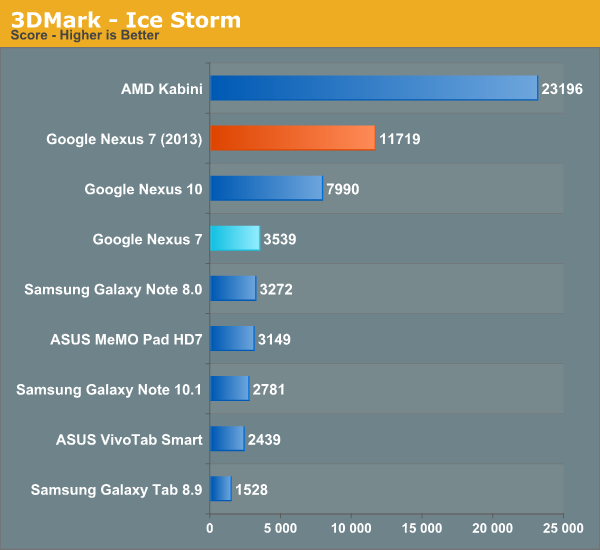



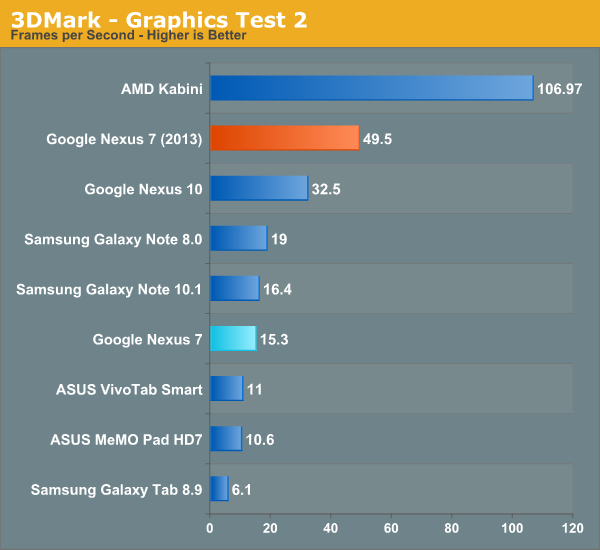
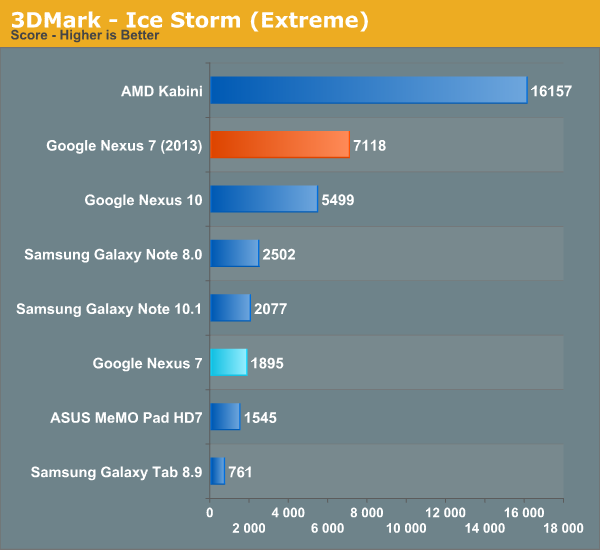

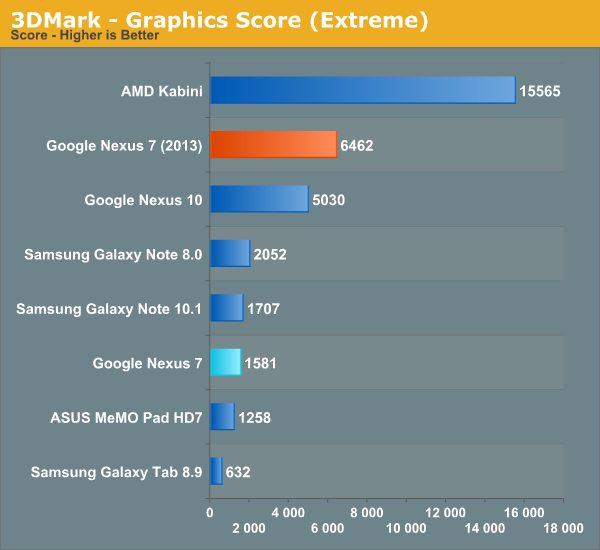

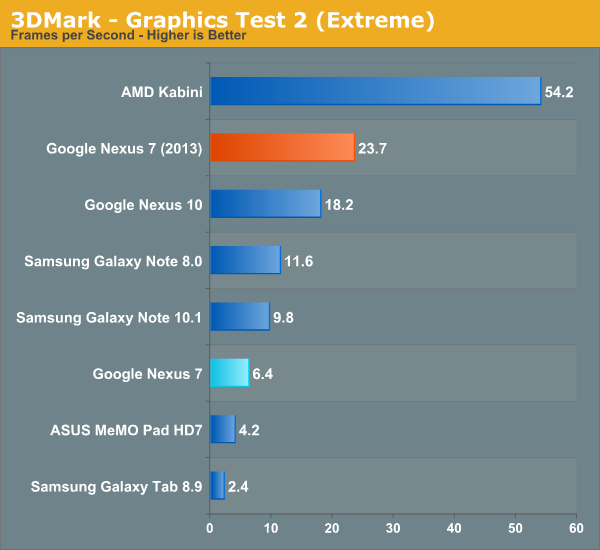


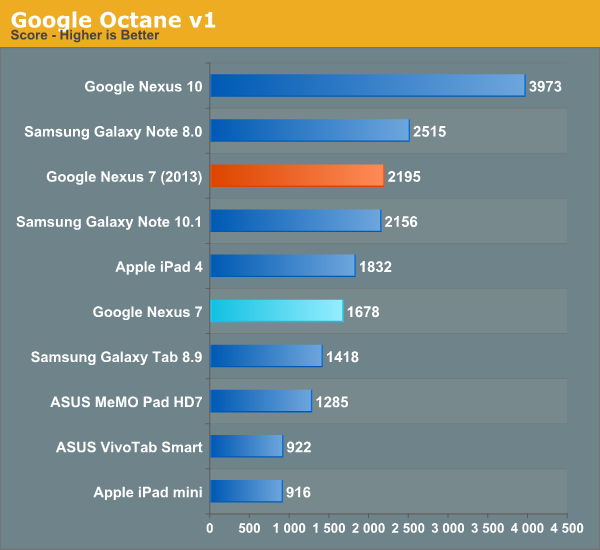
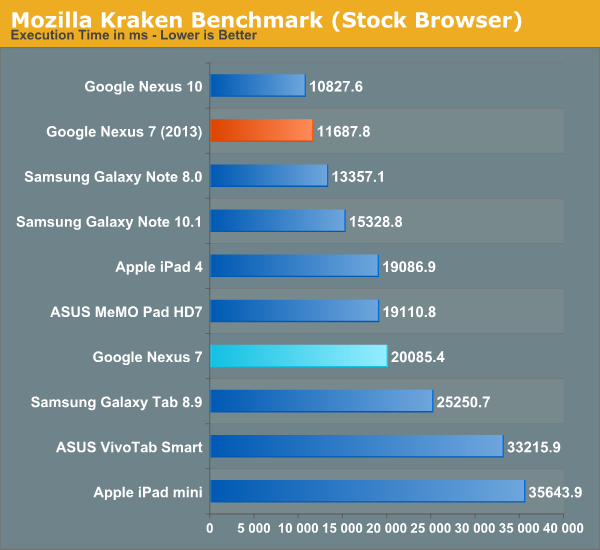
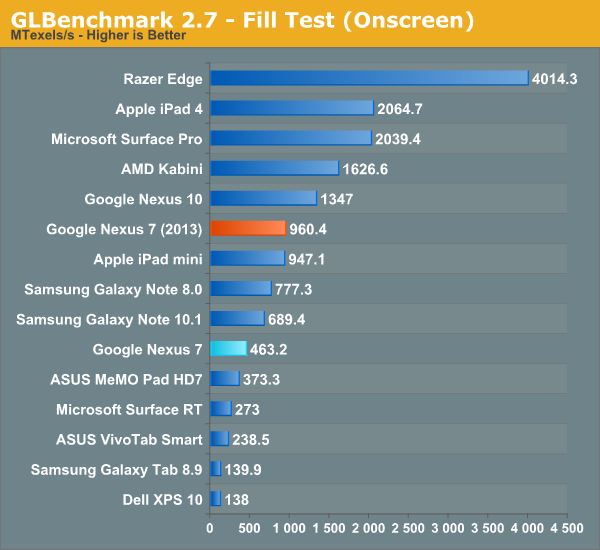
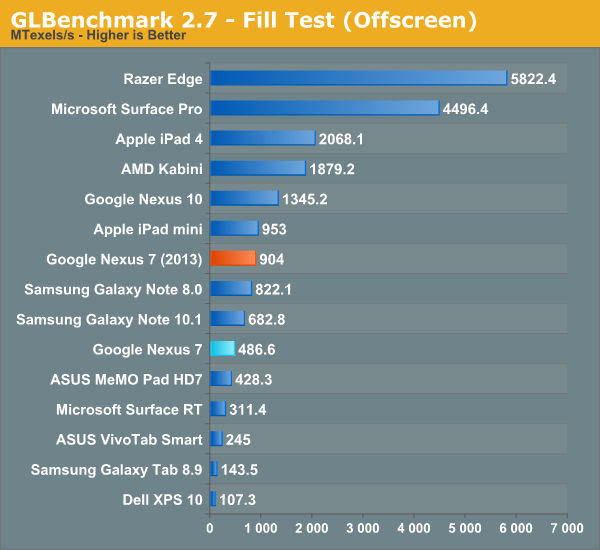
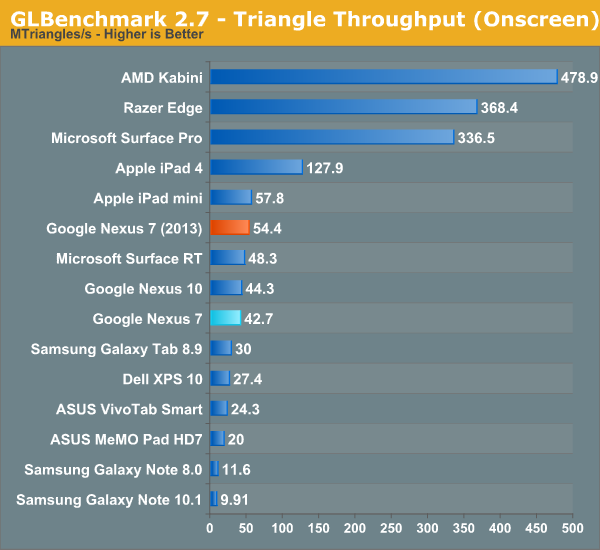
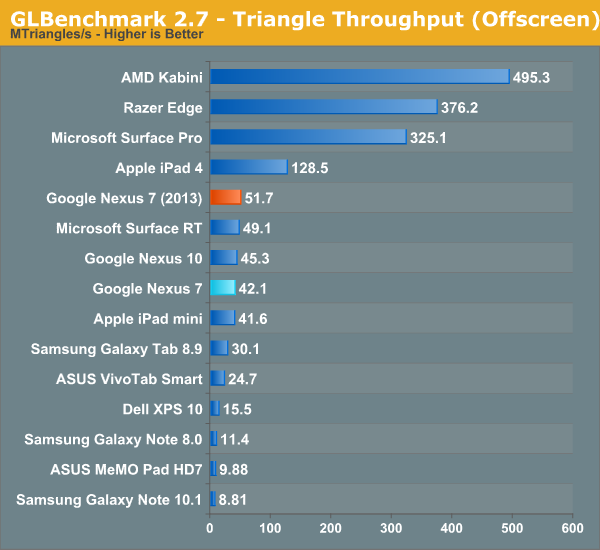
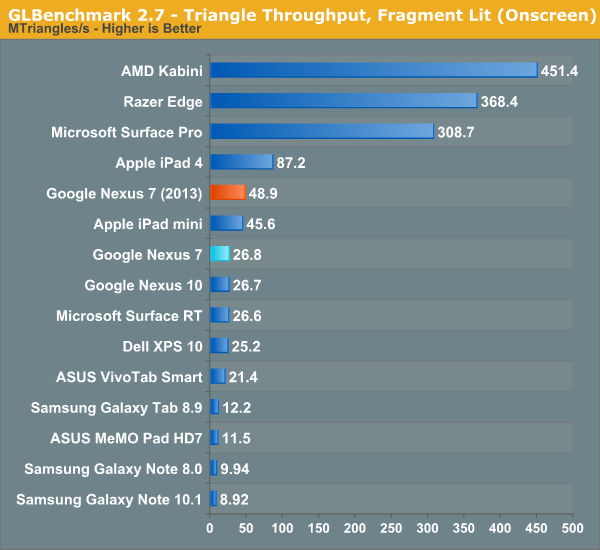
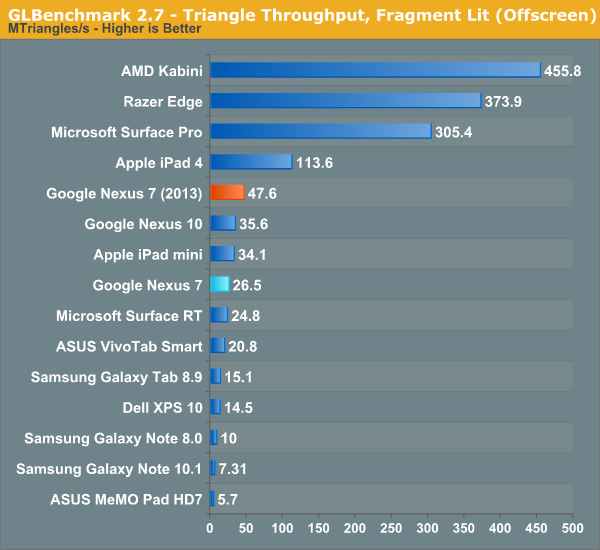
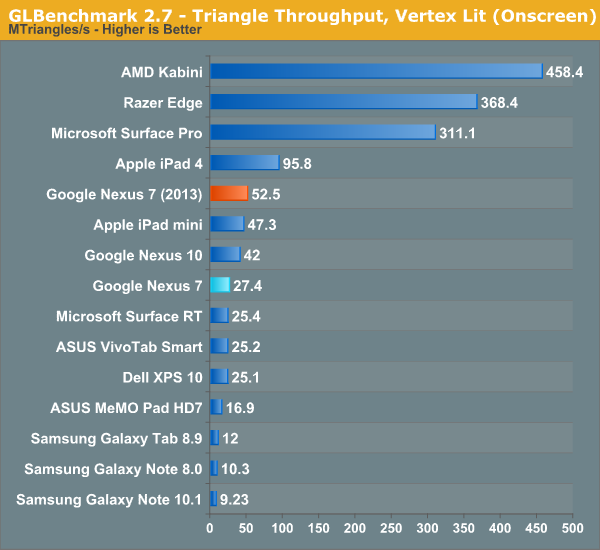
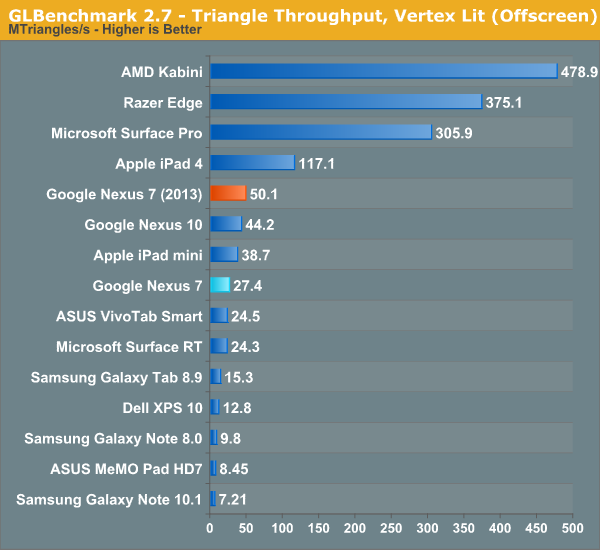

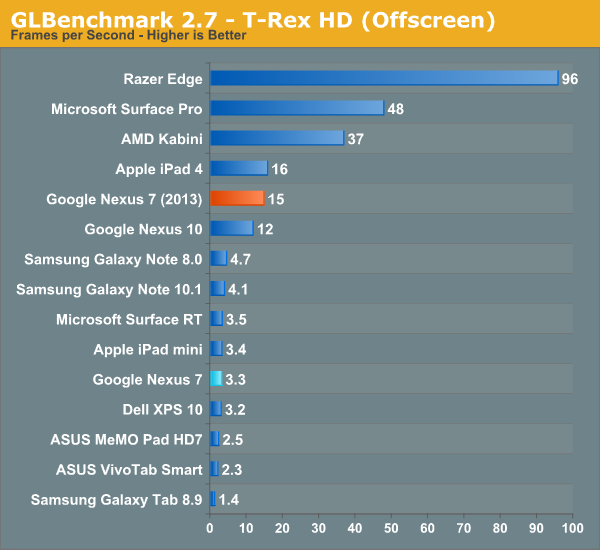
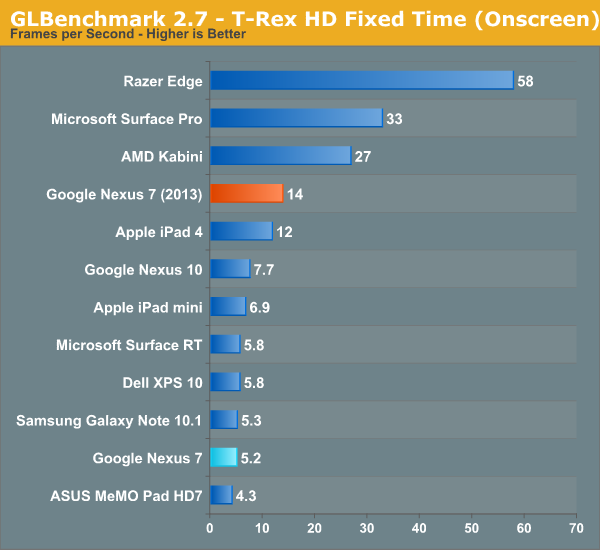
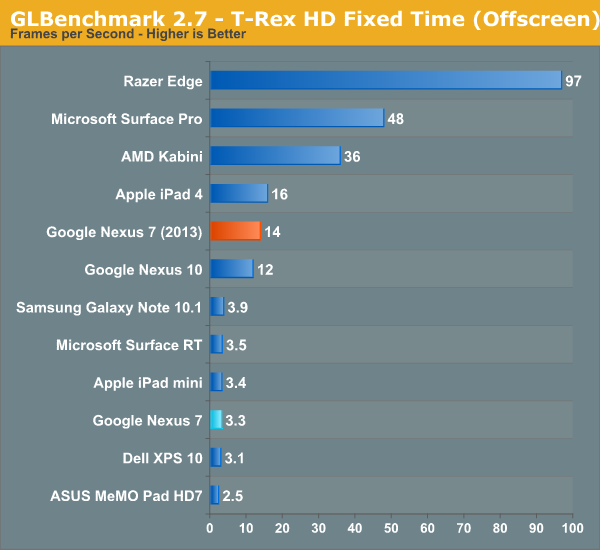
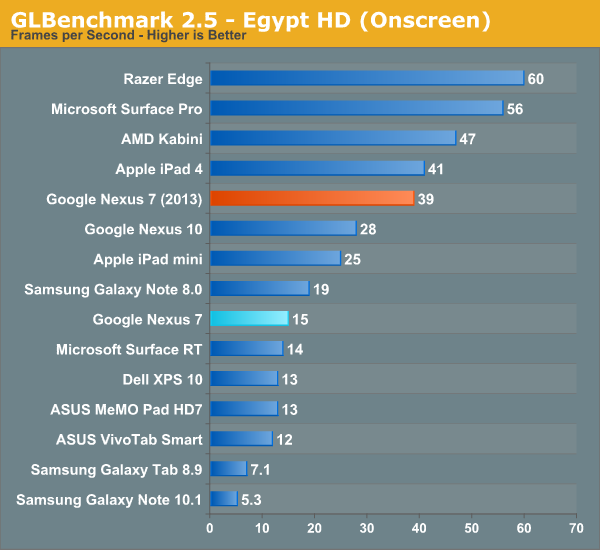
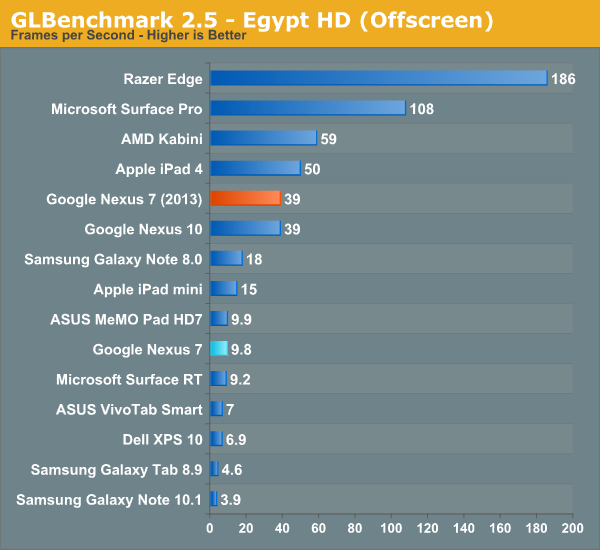
Suffice it to say, moving from 1.2–1.3 GHz Tegra 3 to 1.5 GHz APQ8064 represents a big jump forwards in performance. Google claimed 1.8x improvement on CPU performance, and 4x improvement on GPU, which gets validated pretty much consistently through the benchmarks. I never felt like Tegra 3 was a slouch by any means (performance was more I/O bound on the OG Nexus 7, which we’ll talk about in a moment), but the new Nexus 7 has ample performance for the considerable increase in screen resolution.
Dat eMMC
It wasn’t any secret with the original Nexus 7 that much of the real world performance was gated by storage I/O throughput – we wrote about it after all – and storage performance was a common complaint while multitasking on a few other previous and similar era ASUS tablets. Most of the time performance was acceptable, and for $200 you can’t complain too much about things, the issue was that further on in the life of the tablet performance began degrading somewhat notably, leading to complaints.
Obviously the first thing I did on the Nexus 7 (2013) was run Androbench with the same 100 MB settings to test and see what out of box I/O performance looks like. Things are much better with the new Nexus 7 than they were with the previous one, so at a high level all is good.
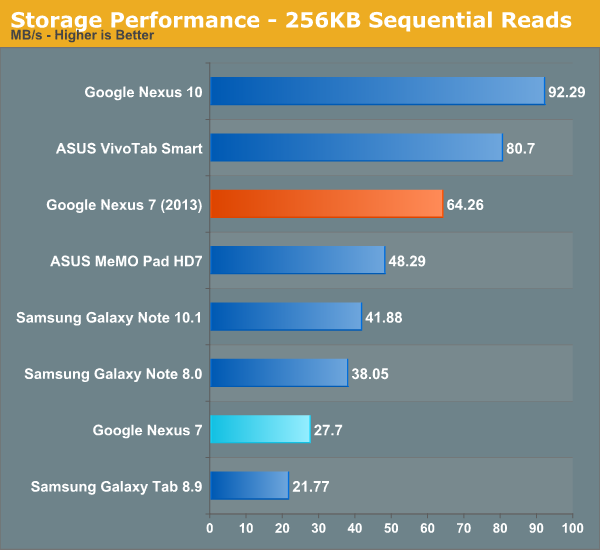
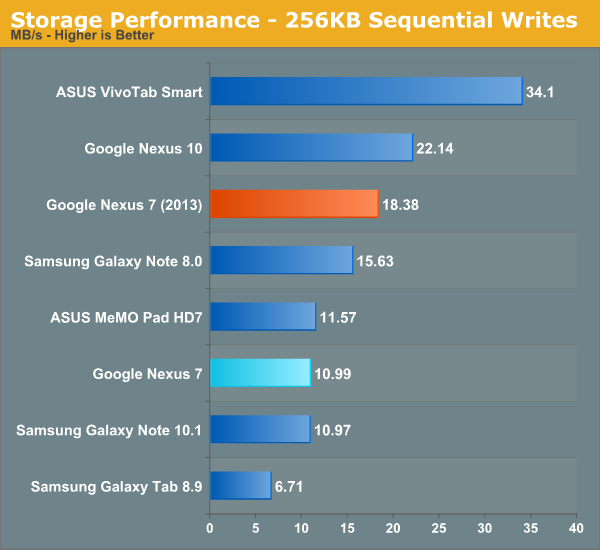
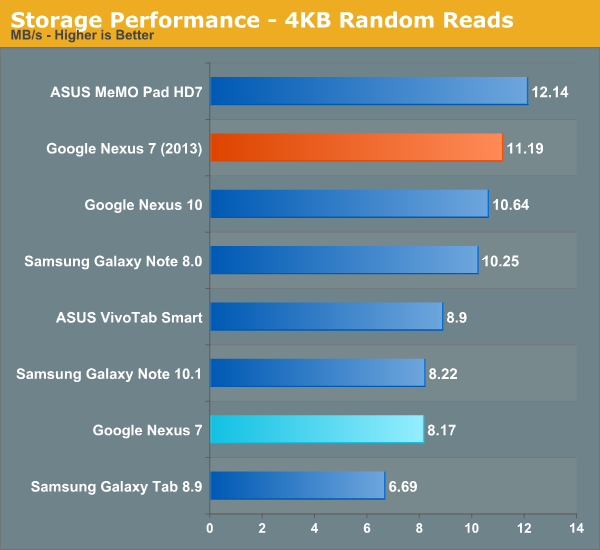

The story actually is a bit more involved however. One of the big problems was that the slowness which occurred with the prior Nexus 7 took device aging to appear – it was great for the first few months, but after you started loading it things tailed off. The new Nexus 7 (2013) with Android 4.3 includes support for fstrim, essentially idle garbage collection, which TRIMs the eMMC when a few conditions are met – the device is idle, screen off, and battery above roughly 70-percent. I’m told that TRIM support has been part of the eMMC standard since around version 4.2, it was just a matter of enabling it in software. The result is that the new Nexus 7 shouldn’t have these aging affects at all. Better yet, fstrim support has also been added to the old Nexus 7 with as of the Android 4.3 update, so if you’ve got a Nexus 7 that feels slow, I/O performance should get better after fstrim runs in the background. I'm checking on whether the other Nexus devices have also had TRIM support added. I would consider the slow storage aging problem fixed as of now, and Google took the eMMC and storage I/O performance issues with the previous Nexus 7 to heart for this version.


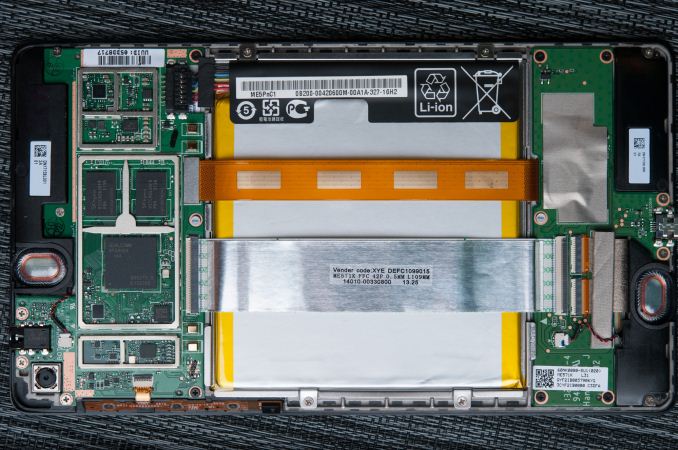
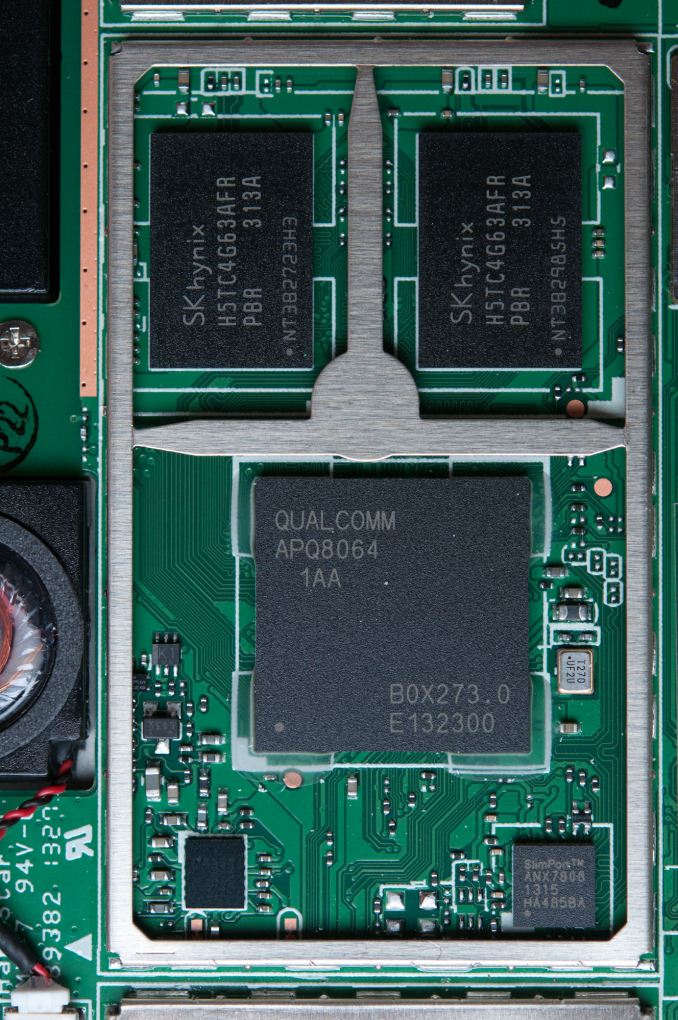














252 Comments
View All Comments
KDOG - Saturday, August 3, 2013 - link
Aaaahh ... SlimPort. Nevermind....KDOG - Saturday, August 3, 2013 - link
Still don't like the fact that they don't have mSD slots....piroroadkill - Tuesday, September 3, 2013 - link
milliSD? I didn't know there was such a thing.The only correct abbreviation is surely µSD.
d14b0ll0s - Saturday, August 3, 2013 - link
the specs chart is wrong for the old N7 -- I am a happy owner of a 32GB version, as it was '16 or 32' with the 2012 model as welljcsweeney - Sunday, August 4, 2013 - link
Brain, great review as usual, just wondering about the GPS performance.I just received my new nexus 7, and the GPS is not functional. If >1 app tried to use the GPS it looses lock, and won't regain lock until after a reboot. After searching a bit, this seems to be a common issue.
Did this show up during the time you were doing your mini review, or is it a new issue, potentially introduced with new software updates.
In any case, please cover the GPS performance in the full review.
darwinosx - Tuesday, August 6, 2013 - link
GPS is a known issue that Google is working on.jcsweeney - Wednesday, August 7, 2013 - link
I agree this is a known widespread issue. It's just that the review process missed it, and declared that the GPS worked great.Anandtech does the best reviews, benchmarks in the industry (IMO), and they seem open to updating the benchmarking process, hence the suggestion.
PointTruth1 - Thursday, August 15, 2013 - link
Great Article Brian, thanks for writing it. Wow there are so many different opinions on this forum! This is helpful. But I also feel overwhelmed when I try to identify just the main strengths and weaknesses. I just googled around, and found this page:http://productsummaries.com/Asus-Google-Nexus-7-Ta...
It claims that it parsed through hundreds of Asus Google Nexus 7 Tablet reviews and distilled a short list of dominant pros and cons. It helped me choose 7, hope it helps you as well.
lookit77 - Wednesday, August 21, 2013 - link
I believe that the USA version supports lte band 3.lookit77 - Wednesday, August 21, 2013 - link
From: https://support.google.com/nexus/7/answer/3248332?...North America:
GSM: 850/900/1800/1900 MHz
HSPA+: 850/900/1900/2100/AWS (1700/2100) MHz (Bands: 1/2/4/5/8)
LTE: 700/850/1700/1800/1900/2100 MHZ (Bands: 1/2/3/4/5/13/17)